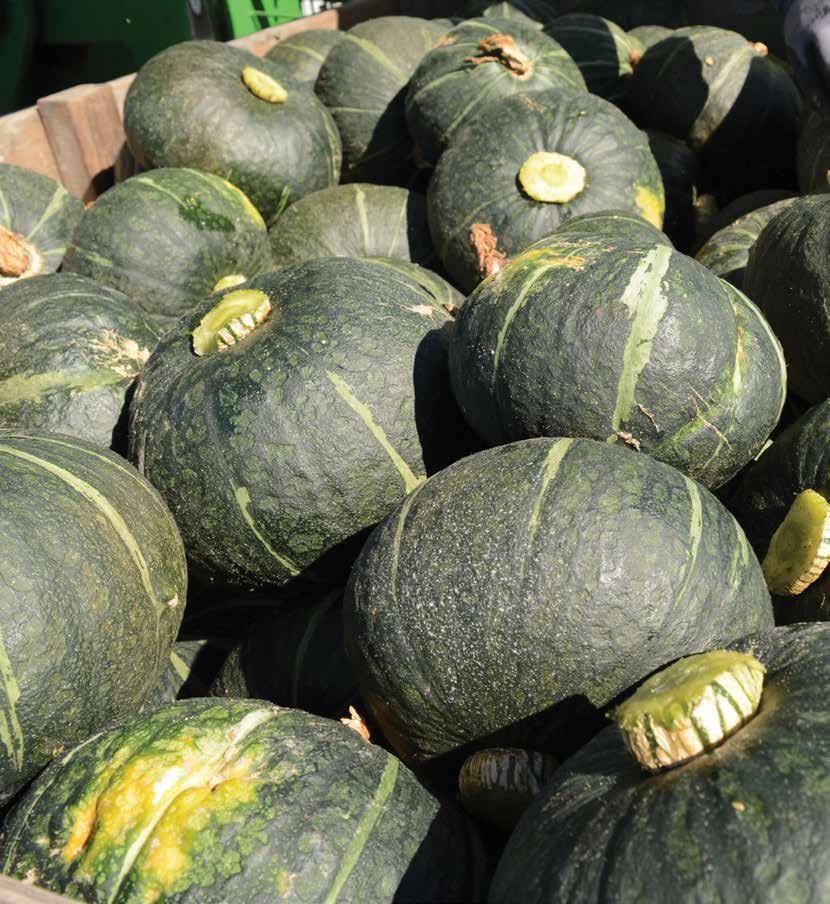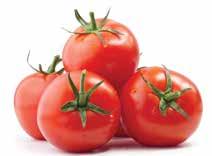
11 minute read
Biosecurity 101: How MPI works to protect growers
BIOSECURITY 101:
HOW MPI WORKS TO PROTECT GROWERS
Words by Heather Woods
Biosecurity staff at work
Mike Inglis, Northern Regional Commissioner for the Ministry for Primary Industries (MPI), spoke to us about the biosecurity approach to Covid-19 and more broadly about how MPI works to reduce the impact of threats to growers.
The Covid-19 response
Mike Inglis says New Zealand – the people, the government, and the many agencies tasked with managing Covid-19 – has done an excellent job, and the small freedoms we appreciate now like going to the beach, to work or to the shops, are testament to that. From an MPI perspective, it has taken solid leadership, clear deliverables and an outcomes-focused plan for it to work, and those qualities are second nature for Mike, coming from a background in Corrections where there is a policy of driving performance and operational excellence to ensure successful leadership. And he’s a public servant at heart, so when Covid-19 made its grand entrance, the only option was to rally the troops and get down to business. Protecting people is the number one priority so a Covid-19 oversight group was formed to engage with the Ministry of Health, unions and public service agencies at the airports. In the early days where flights from China were the main concern, it was all about arranging appropriate PPE (personal protective equipment), physical screens being erected, and physical distancing – everything we now know as the physical changes required and which are vital for biosecurity risk assessment on the passenger side. In fact, the entire MPI response was aligned with the Ministry of Health, with well-being at the core of their communications for the ongoing support of staff health and safety. It has also been important to support essential workers; they have done us all proud, they have helped keep us safe.
Threats to New Zealand and how they’re managed
To be effective in managing threats at the border it is important to understand that the biosecurity system is not actually just about the border. Risks are managed through multiple layers of protection. Offshore agreements with other countries are in operation before people and cargo even reaches New Zealand. Countries exporting goods to New Zealand can help to mitigate the risk of biosecurity threats by following processes and procedures to ensure proper treatment and fumigation where required. On arrival at our border, goods are screened, passengers are scanned, and trained staff assess the high-risk targets and the likelihood of hitchhikers. If pests are found, they’re eradicated and managed quickly. Passenger non-compliance with biosecurity rules is usually unintentional, like forgetting an apple or orange in hand luggage, which makes targeting them difficult. But mistakes like that can be costly and allow threats like fruit flies to go undetected until it’s too late. Staff are expertly trained in risk assessment, have access to effective tools,
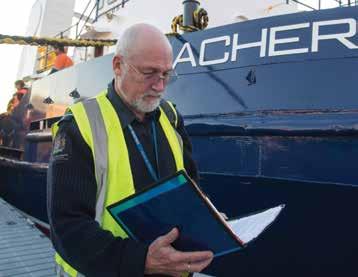
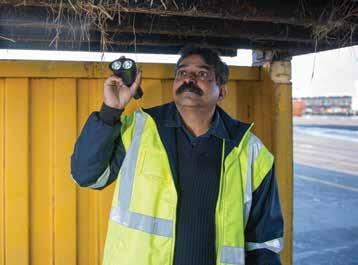
and with the recent investment into new technology, scanners capable of automatic detection are adding a further layer of protection.
In recent years, the explosion of e-commerce has resulted in an increase of seed and plant products ordered online making their way into the country. MPI have worked closely with offshore teams and directly with companies to make sure they are following due process, maintaining our import standards, and that health standards are also understood. There is a risk of animal products and untreated goods arriving via the international mail centre, which is why MPI is working with NZ Post and investing in a new, high-tech centre due in 2023. The team can’t physically inspect everything that crosses the border, but import documents are checked, audits are conducted, and high-risk items are clearance checked before release. So protection for growers and their livelihood is quite extensive.
Passenger and cargo hitchhikers
Technology helps the fight against biosecurity threats, but as it is not 100% foolproof someone must still physically inspect and identify risks. It is a joint intelligence effort between Customs and Biosecurity to target and decide what consignments are a potential risk, may contain insect pests, and monitor the country of origin. About 5% of all cargo has bio-material that requires assessment, such as fresh produce and plant materials. There is a very clear biosecurity system in place that must be maintained to keep New Zealand disease and pest-free. Transitional facilities around the country are also inspected by quarantine officers and approved staff for clearing cargo. The risk compliance rate is currently 98.9%. That means there’s only a 1.1% chance of a threat sneaking through. Messaging to passengers is very clear, and education is ongoing, but people still make costly mistakes. For instance, there is a risk of African swine fever entering the country from people bringing in meat products. Staff and dogs are trained to inspect and confiscate these items. In the opinion of Mike Inglis the biggest risk to growers coming across our borders are fruit flies and brown marmorated stink bugs (BMSB). Technically, they’re not ranked as two priority pests, but the impact they have has been seen first-hand, and fruit fly required full community support to eradicate it. The Queensland fruit fly, the Pacific fruit fly and the Mediterranean fruit fly damage almost all fruit and vegetable crops, they limit trade and impact export markets. It is for that reason our health standards are so tight, to ensure imported fresh products are free from fruit flies and their eggs. There is also a national surveillance programme that actively watches for around one-hundred species of fruit fly, but in particular the Queensland fruit fly. There are about 7,500 pheromone traps around the country near airports, seaports and densely populated areas. So far, all large-scale removals have been successful. BMSB is the other serious offshore threat to horticulture crops. They hide in cargo and confined spaces like machinery, and in mail, so mandatory offshore treatment is a key layer of protection. And that is one of the most successful programmes to date, collaborating with Australia officials to develop the offshore treatment programme that resulted in a reduction of BMSB interceptions by 73% in 2020.

THE RISK COMPLIANCE RATE IS CURRENTLY 98.9%. THAT MEANS THERE’S ONLY A 1.1% CHANCE OF A THREAT SNEAKING THROUGH.

Left to right : Northern Passenger Manager Craig Hughes, MPI Director-General Ray Smith, Head of Biosecurity New Zealand Penny Nelson, Northern Regional Commissioner Mike Inglis, Technology Team Leader Brett Hickman
73%
COLLABORATING WITH AUSTRALIA OFFICIALS TO DEVELOP THE OFFSHORE TREATMENT PROGRAMME RESULTED IN A REDUCTION OF BMSB INTERCEPTIONS BY 73% IN 2020
New import rules also take a hard line on sea cargo and vessels that don’t comply, with inspecting officers given the power to prevent the discharge of cargo and direct them to leave New Zealand.
Using detector dogs
Detector dogs are some of the hardest working members of the MPI team, and they have excellent ongoing training in both plant and animal risk. Covid-19 had an impact on the number of quarantine officers required at a passenger level and while they’ve been redeployed elsewhere, the capacity of detector dogs has been maintained. The training methods used for the dogs are approved and independently audited every twelve months. An entire centre, including kennels, is set up so the dogs can be put through their paces. Dogs are used for the detection of fruit flies, BMSB, and plant materials. And a close eye is kept ensuring there’s a good balance between plant and animal detection training. Training the dogs for each kind of threat is similar in terms of the response expected by the dogs, and the rewards they are given to maintain their detection behaviour.
Beyond the training and ongoing work carried out by the dogs, MPI uses awareness campaigns and education to position the dogs publicly as a line of defence. Detector dogs are reliable, intelligent, and a crucial part of the biosecurity strategy.
When threats evade biosecurity
It is impossible to prevent every threat from finding its way into our community – nature will always find a way and human errors happen. But it is important to know that if you spot a threat, securing it and engaging MPI quickly is the best thing to do. The NZ Pest hotline is available for this purpose and Mike Inglis said he would welcome direct calls to get on top of anything that poses a risk to growers or the wider New Zealand population and environment. The biosecurity pledge is to work together across borders, and that might mean physical borders, communities, regional stakeholders, or public service agencies. The goal is to identify problems and solve them quickly, before they become unmanageable, large-scale issues. Communication and engagement keeps conversations flowing and risky evaders at bay.
Growers: how to innovate safely
As growers, looking for new ways to work and new products and innovations in the horticulture sector is always top of mind. This might include sourcing new seed varieties or grafts from outside New Zealand. To do this safely, your best path forward is to engage MPI early. Everyone wants to be part of innovation in the sector, and early warning helps to plan for essential testing and monitoring. If we all play our part, growers can reach beyond the current scope of their business and take advantage of opportunities that may have previously felt out of reach, at the same time keeping our import standards high.
WSP: CAPITALISING
ON CHANGE
The only constant in life is change, and land use is no exception. The choices we make while navigating change have an impact on the long-term resilience and sustainability of both businesses and the environment.
Climate change is already throwing a range of challenges our way, and the scientific consensus is that this will only increase with time. It’s widely recognised that there will likely be higher average temperatures, increasing weather extremes, fewer frost days and patchier rainfall as time goes on - depending on location and how much we can mitigate these effects. However, with careful consideration, it’s possible to understand, plan and adapt to the likely impacts for many of these factors using a range of tactical and strategic adaptations. These include changes in what crop is best suited to a local climate, refinements in pruning practices, which can help adjust to changes in growth patterns, and establishing new water storage and modifying irrigation practices, which can go a long way to creating resilience to patchier rainfall. The impact of storm events on soil loss may be harder to manage. As such, vegetation cover, soil structure management and identifying ways to slow the flow of water through the soil system and across surfaces will be critical in horticulture.
A bigger challenge is that presented by multiple pests and diseases, as their climatic ranges change and ‘sleeper’ pests awaken. It’s hard to predict where and when new pests and diseases will take hold, but when they do, we’ll certainly know. Compounding the problem is that the tools we have available to battle them are becoming fewer, as resistance increases and public caution grows around the effects of pesticide and herbicide use. Creating more resilience to pests and disease will require a range of farm-scale strategies along with a broader perspective, for example diversification of crop choices in relation to the wider landscape. Tipping points - those key moments in time when change must happen - are often the result of several factors combining at once to create a perfect storm. Weather events, changes in the market, a new pest or disease (of plants or humans), even personal events – any of these and more can combine to force change. Tipping points can be a good thing – they are a moment full of potential, when an unsustainable trajectory can become a sustainable one. But these moments of challenge are sometimes the hardest points at which to make to conscious decision to pause and focus on the long term, integrated perspective needed to achieve that potential. Taking time to build resilience and plan for future change means that when change does hit, the outcome can be highly positive. To do this effectively requires a range of skills and expertise, from soil science to social science; from crop suitability to international market access. WSP in New Zealand has a unique breadth of science, engineering and planning skills, and is actively working with the horticulture industry to make the best decisions for current and future food production operations and the communities they feed.
Stephen McNally is Head of Primary Industries. He leads WSP’s sector focus on food security delivered within scarce resources, irrigation infrastructure, technology innovation and horticulture’s interaction with the environment and community. Enquiries contact stephen.mcnally@wsp.com
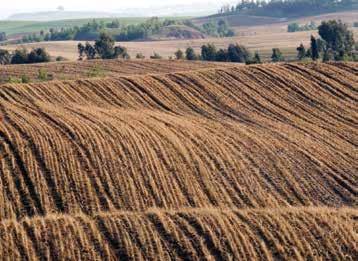
TECHNICAL
THE LATEST INNOVATIONS AND IMPROVEMENTS
49 SUCCESSFUL PLANT GROWTH
